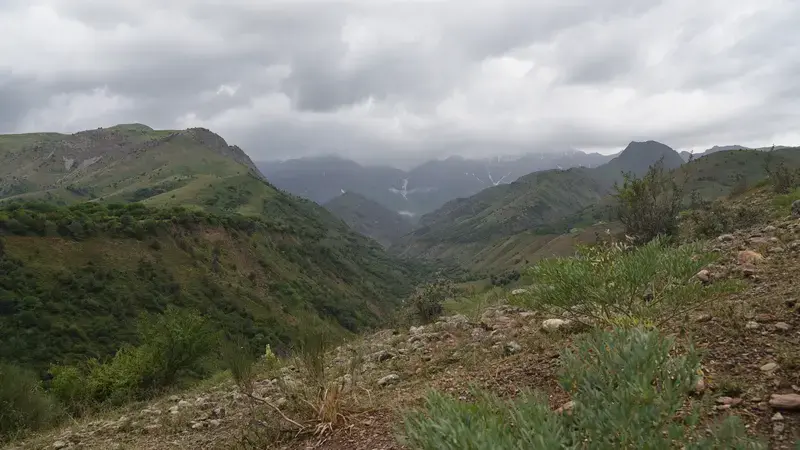Well-designed agroforestry enterprises protect forest land from degradation

By Dr. Akmal Akramkhanov, ICARDA Senior Scientist - Sustainable Land Management, and Anastasiya Shyrokaya, MSc Bonn University
Land degradation, caused by secondary salinization, soil erosion and desertification, poses a major threat to Uzbekistan’s economic development and environmental sustainability.
Over the past decades, many of the country’s agroecological zones have experienced widespread losses of fertile topsoil and nutrients, and vast tracts of fertile grasslands have gradually given way to shrublands, with barer surfaces prone to erosion.
In a country where 50 percent of the population lives in rural areas, and where agriculture is a major source of employment and income, land degradation is responsible for weaker rural livelihoods, subpar crop and livestock productivity, and lower agricultural incomes.
We recently produced an assessment of Land Degradation due to Land Use and Cover Change (LUCC) occurring between 2001, 2009 and 2018.
At the current pace, the study is forecasting a potential doubling of degraded land surface every decade.
In 10 years from now, under a business-as-usual scenario, shrubland areas could expand by 60 percent, and likely cover as much as four percent of the country’s total land mass.
Since none of the previous LUCC assessments of protected areas in Uzbekistan had investigated forestry enterprises, called ‘leskhoz,’ we attempted to assess the changes in land cover quality within forestry enterprises in seven different areas of the country.
We considered forestry enterprises as protected, because their access is restricted, and thought that it would be very interesting to look at land degradation dynamics inside these specific protected areas.
This proves that creating a protected zone can be a viable solution to halt land degradations in areas that are used for intensive livestock grazing.
In Uzbekistan, considerable land degradation and money losses occur through changes from higher to lower valued ecosystem, such as this shift from grasslands to open shrublands. Hence, more attention should be given to rangeland protection.
This study, which mapped Uzbekistan’s land degradation hotspots, is a call for action for decision-makers to leverage sustainable land management practices to mitigate the risks of this fast-changing environment.
ICARDA is grateful to the Deutsche Gesellschaft für Internationale Zusammenarbeit (GIZ), The Council for Tropical and Subtropical Agricultural Research (ATSAF), and the University of Bonn for making this study possible.



